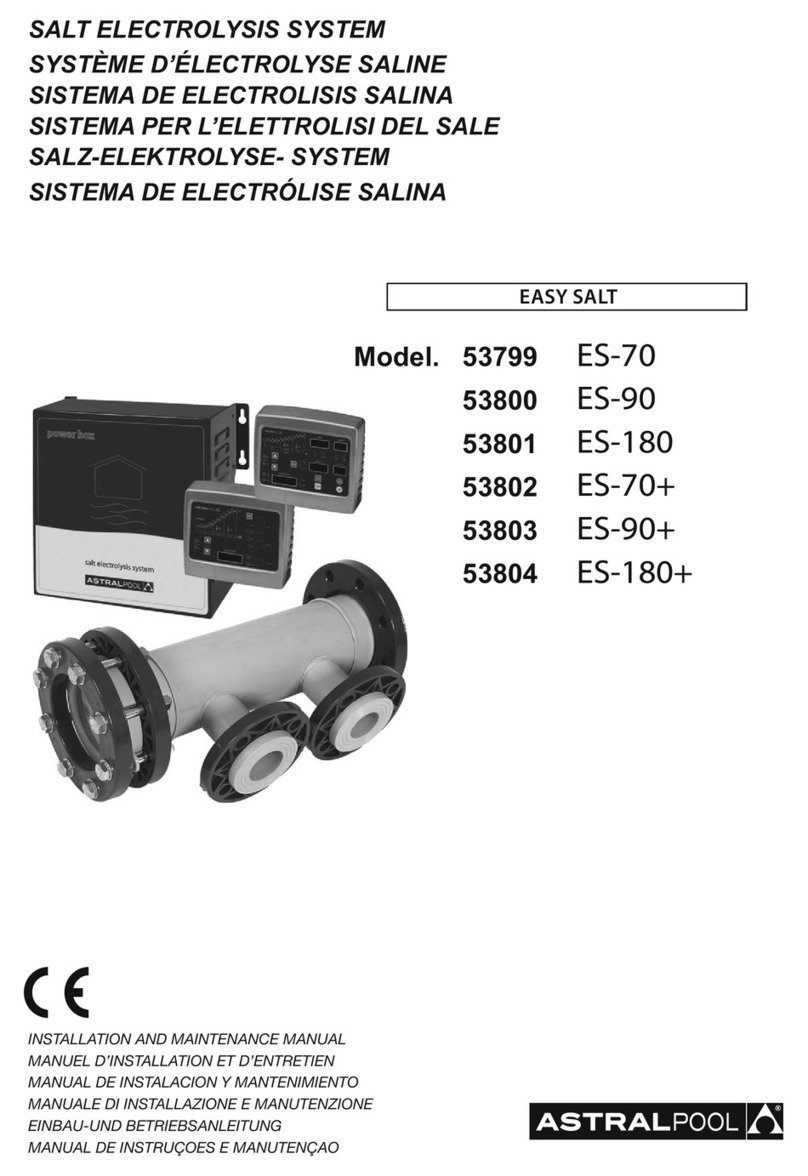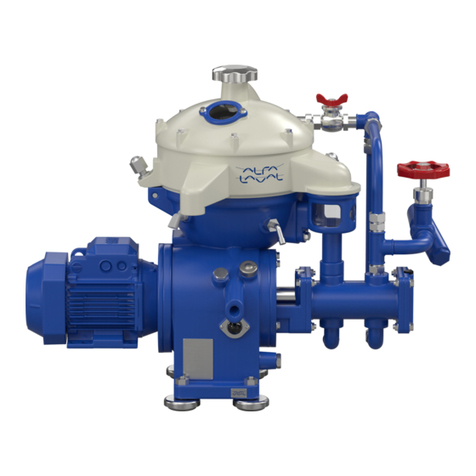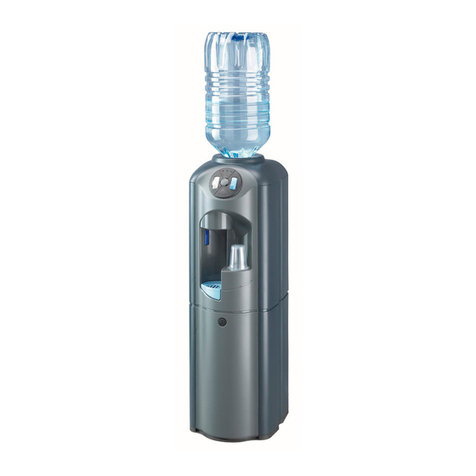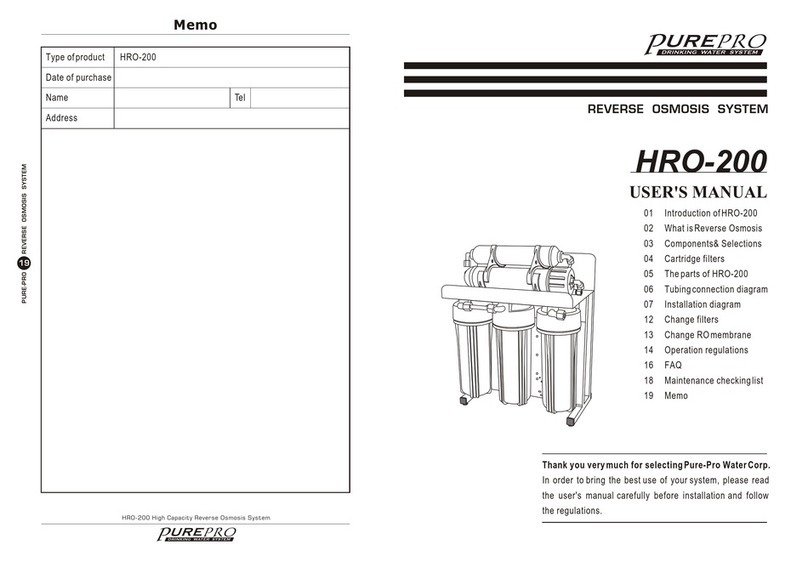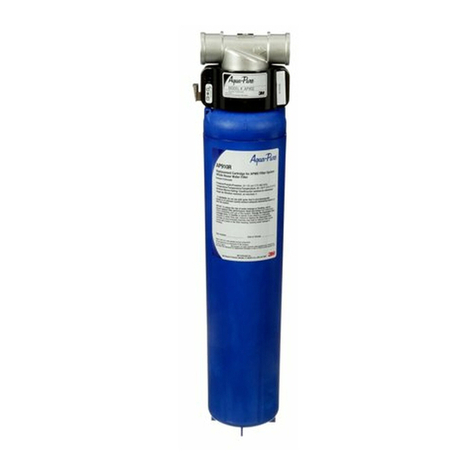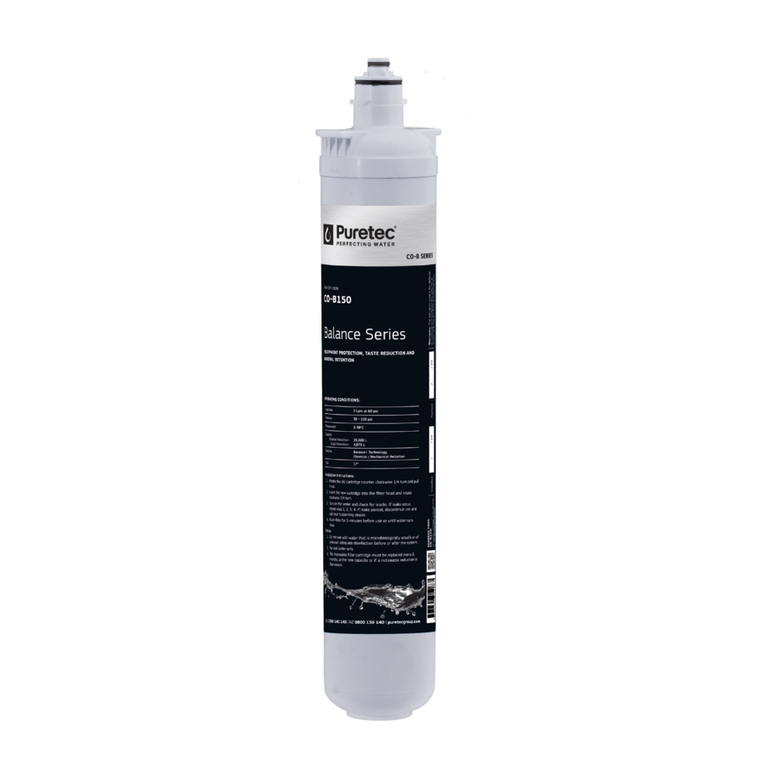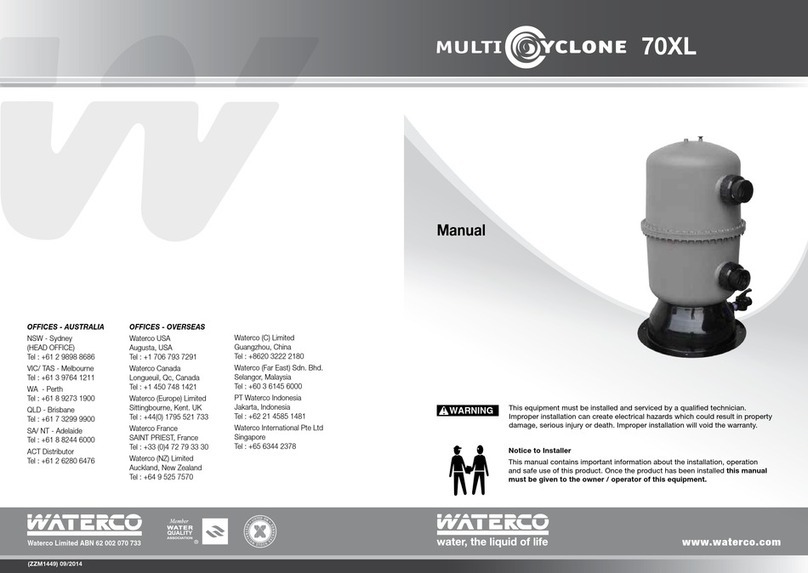BRIO CROS2400 User manual

CROS2400
CROS4800
CROS9600
CROS14400
Distributed by Brio Water
Technology, Inc.
City of Industry, CA 91745 ©2023
Brio® is a registered trademark of
Brio Water Technology, Inc.
Instruction manual
BRIO commercial RO system
If you have any questions or concerns when
installing, operating, or maintaining your reverse
osmosis system, call our toll free number:
+1 (844) 257 4103
or visit briowater.com
When you call, please be prepared to provide
the model, date code and serial number of your
product.
MADE IN UKRAINE

INSTRUCTION MANUAL BRIO RO SYSTEM
2
This manual is the intellectual property of Brio Water Technology, Inc. Copying and reprinting is prohibited. ©2023
CONTENTS
1
Acronyms and abbreviations
3
2
RO system
3
2.1
Overview
3
2.2
Technical specifications
4
2.3
Product water capacity charts
5
3
Installation and startup
9
4
Installation
requirements
14
5
Operating
requirements
14
6
Shipping and storage requirements
16
7
Troubleshooting
16
8
Controller
18
8.1
Overview
18
8.2
Input & output specifications
18
8.3
Operating modes
19
8.4
Program settings
21
Annex A. Technological schemes
26
Annex B. Piping layout
32
Annex C. Wiring diagram
36
9
Warranty
40

INSTRUCTION MANUAL BRIO RO SYSTEM
3
This manual is the intellectual property of Brio Water Technology, Inc. Copying and reprinting is prohibited. ©2023
CIP —Clean-in-place
FF —Forward flush
NC —Normally closed
NO —Normally open
TDS —Total dissolved solids
PCB —Printed circuit board
P&ID —Pipe and instrument diagram
RO —Reverse osmosis
GPM —Gallon per minute
GPD —Gallon per day
2.1. OVERVIEW
Brio reverse osmosis systems are used for demineralizing water in industrial, municipal, commercial
applications. Brio RO system can be used to demineralize low to medium salinity feed water. System
components comprise carbon steel skid, industry standard Big Blue 20 prefilters, high pressure
pump, array of pressure vessels with membranes, power cabinet, process controller, and the
necessary valves and instruments.
This appliance is not intended for use by persons (including children) with reduced
physical, sensory or mental capabilities, or lack of experience and knowledge, unless
they have been given supervision or instruction concerning use of the appliance by a
person responsible for their safety. Children should be supervised to ensure that they
do not play with the appliance.
Brio RO systems operate as follows.
Raw water is fed through sediment prefilter in order to remove particles. If raw water is treated
with antiscalant or other RO chemicals, the prefilter housing ensures better mixing.
Then, high pressure pump feeds the water into the membrane module or membrane array,
in which feed water undergoes separation process and splits into permeate and concentrate
streams.
Permeate (purified water) goes to the permeate outlet and is collected in water tank. Permeate line
is also fitted with a pressure switch to halt the unit if significant pressure builds in permeate line
indicating a full pressurized tank or pipeline shutoff.
Float switch has to be put inside an ambient pressure tank (if used) to start and stop the unit
depending on the level of permeate in the tank.
Part of the concentrate stream is discharged to drain via drain rotameter. The rest goes back to the
suction end of the high pressure pump via recycle rotameter.
Flow rates of drained and recycled concentrate have to be regulated to specified ranges in the
Technical specifications with the regulating valves built in the rotameters.
When operation is interrupted by float switch or pressure switch signal, the system runs a forward
flush (membrane rinse) cycle, then switches to standby. The controller receives temperature and
conductivity of permeate, permeate level, pressure switch statuses, and external inhibition signals.
The RO unit can be fitted with an optional permeate flush or raw water blending assembly.
It is recommended to review the installation diagrams of complex water treatment systems that
include a reverse osmosis system. The installation diagrams are given in Annex A.
1. ACRONYMS AND ABBREVIATIONS
2. RO SYSTEM

INSTRUCTION MANUAL BRIO RO SYSTEM
4
This manual is the intellectual property of Brio Water Technology, Inc. Copying and reprinting is prohibited. ©2023
2.2. TECHNICAL SPECIFICATIONS
Table 1. Physical parameters
Model
CROS2400
CROS4800
CROS9600
CROS14400
Rated capacity, GPD*
2 300
5 000
8 800
12 000
Membranes quantity
1
2
4
6
Rated voltage
115 V, 60 Hz
115 V, 60 Hz
230 V, 60 Hz
230 V, 60 Hz
System electrical power, HP (kw)
1.5 (1.1)
1.5 (1.1)
2.2 (1.6)
2.2 (1.6)
Dimensions (Wid ×Dep ×Hgt), inch
24 × 18 × 61
24 × 18 × 61
41 × 30 × 68
41 × 30 × 68
Approx. weight (bare/crated), lbs
130/150
140/160
230/385
260/415
System water piping connecon ports
(feed water, permeate, drain)
½ ″
½ ″
1″
1″
Operating parameter specifications**
Permeate flow, GPM
1.5
3
5.4
7.7
Concentrate flow rate, GPM
0.5
1
1.8
2.5
Concentrate recycle flow rate, GPM
6
11
21
31
* For 74 °F, 375 ppm feed water, DuPont FilmTecTM XLE 4040 membrane, flow factor 1
** Feed water must comply with requirements in Table 2. If some parameters do not meet the requirements, it
is recommended to contact your product support for advice.
Table 2. Limitations
Tap feed water must be pre-
filtered from fine particles and
chlorine before entering the
RO system.
Well water may contain impurities such as
hardness, iron, manganese, silica, hydrogen
sulfide that can quickly lead to membrane
failure. Some of these challenges can be
addressed by using injection of antiscalant.
Perform a detailed laboratory analysis of your
well water and consult a water treatment
specialist to see if you need additional
equipment for treating your well water.
***Some limitations may not apply if using antiscalant, oxygen scavenger, or other type of chemical
pretreatment.
2. RO SYSTEM
Influent water quality***
Hardness
9 gpg (150
ppm CaCO3)
Total dissolved
solids
1500 ppm
Iron
0.1 ppm
APHA Color
15 degrees
Manganese
0.05 ppm
Residual Chlorine
0.1 ppm
Silica
20 ppm
Hydrogen sulfide
none
Operating parameters
Required supply
water pressure
30 –60 PSI
Water temperature
40 –80 °F
Operating pressure
120 –180 PSI

INSTRUCTION MANUAL BRIO RO SYSTEM
5
This manual is the intellectual property of Brio Water Technology, Inc. Copying and reprinting is prohibited. ©2023
2.3. PRODUCT WATER CAPACITY CHARTS
Permeate flow rates are calculated under the following conditions:
•30 PSI influent water pressure
•0 PSI backpressure in the permeate line
•flow factor 0.85 (flux decline equivalent to 3 years of use)
Your system’s flow capacity may be different depending on the above factors and water chemistry.
Figure 2.1 CROS2400 ow rate chart with XLE-4040 membranes
Figure 2.2 CROS2400 ow rate chart with TW30-4040 membranes
2. RO SYSTEM

INSTRUCTION MANUAL BRIO RO SYSTEM
6
This manual is the intellectual property of Brio Water Technology, Inc. Copying and reprinting is prohibited. ©2023
Figure 2.3 CROS4800 ow rate chart with XLE-4040 membranes
Figure 2.4 CROS4800 ow rate chart with TW30-4040 membranes
2. RO SYSTEM

INSTRUCTION MANUAL BRIO RO SYSTEM
7
This manual is the intellectual property of Brio Water Technology, Inc. Copying and reprinting is prohibited. ©2023
Figure 2.5 CROS9600 ow rate chart with XLE-4040 membranes
Figure 2.6 CROS9600 ow rate chart with TW30-4040 membranes
2. RO SYSTEM

INSTRUCTION MANUAL BRIO RO SYSTEM
8
This manual is the intellectual property of Brio Water Technology, Inc. Copying and reprinting is prohibited. ©2023
Figure 2.7 CROS14400 ow rate chart with XLE-4040 membranes
Figure 2.8 CROS14400 ow rate chart with TW30-4040 membranes
2. RO SYSTEM

INSTRUCTION MANUAL BRIO RO SYSTEM
9
This manual is the intellectual property of Brio Water Technology, Inc. Copying and reprinting is prohibited. ©2023
CAUTION! Electrical installation should only be done by a qualified electrician.
3.1 Rest the unit on a flat level surface suitable for its weight (see Table 1). Inspect the RO
system carefully for damage, including piping, valves and instruments, pump, pressure vessels, pre
filter housings, power cabinet before proceeding with connection and startup.
3.2 Install membrane in each pressure vessel as follows.
Before installing membrane, make sure that the O-ring is assembled on the vessel
end cap.
Figure 3.1 Exploded view of pressure vessel
Disconnect poly tubes from the pressure vessel ports. Put tags or mark the disconnected tube ends
to avoid confusing them later. Remove one of the end lids from each pressure vessel. First, remove
the fastening bolts and take the retaining half rims out of the circular groove on the inside of the
pressure vessel. Remove the lid with the membrane coupling.
Observe direction of arrow on pressure vessel when installing membrane. Use
glycerol or a similar RO-compatible lubricant as needed. Avoid touching membrane
with hands. Use sterile rubber gloves when handling membrane.
Figure 3.2 Correct position of the installed membrane
3. INSTALLATION AND STARTUP
1 –screws,
2 –locking crescents,
3 –end cap,
4 –o-ring for vessel end cap,
5 –o-ring for end cap

INSTRUCTION MANUAL BRIO RO SYSTEM
10
This manual is the intellectual property of Brio Water Technology, Inc. Copying and reprinting is prohibited. ©2023
Make a cut in membrane packaging bag and insert membrane in the pressure vessel so that the
brine seal ends up in the inlet end of the pressure vessel. Central tube of the membrane has to mate
with membrane coupling installed at the concentrate end of pressure vessel. If necessary, remove
the lid at the opposite end to facilitate installation of the membrane.
Install the lid back in place. Insert the retaining half rims back in the groove, then fasten with bolts.
Re-connect the tubes in the exact way they were originally connected.
3. INSTALLATION AND STARTUP

INSTRUCTION MANUAL BRIO RO SYSTEM
11
This manual is the intellectual property of Brio Water Technology, Inc. Copying and reprinting is prohibited. ©2023
3.3 Connect the water inlet to the water mains or feed pump. Connect the drain outlet to the
sewer with pipe or rigid hose. Make an air gap at the end of the drain line to prevent backsiphonage
from the sewer. Connect tube or hose to permeate outlet and run it to permeate tank.
For all connections, recommended pipe size is equal or greater than that of the connection port. It
is advisable to use plastic/composite pipe or rigid non-kinking hose. Use appropriate fittings as
necessary.
It is strongly recommended to use short runs of pipe or hose the size of which matches
or exceeds that of the connection port.
3.4 If using an atmospheric (gravity flow) pure water tank, install the float switch in the tank.
Move the ballast the necessary length up the cord to ensure the proper level difference between
activated and deactivated position. Then, put the float switch inside permeate tank. After the first
filling of the tank, verify that the float switch activates and deactivates at the right heights.
3.5 If using service interruption by external signal (microswitch), remove conductor
connecting terminals 6 and 7 together on the controller’s PCB. Then, run a 2-wire cord from the
external switch’s normally closed pins inside the controller housing, and connect to the #6 and #7
screw terminals. If using antiscalant or other RO chemicals, refer to the dosing pump’s manual for
instructions regarding the dosing pump setup.
3.6 Connect the power cord to an electrical mains with the necessary voltage specifications
and ampacity. See the specifications section for more detail. Use a properly selected circuit breaker
and a voltage stabilizer in case the electrical grid is prone to brownouts or overvoltage.
START UP THE SYSTEM AS FOLLOWS:
3.7 Make sure that the drain flow regulating valve is fully open before starting. If your unit
has built-in recycle line, open the recycle regulating valve fully open as well. Make the necessary
arrangements for the initial portion of permeate to be discharged to the sewer to flush out the
membrane preservative.
3.8 Switch on the power supply to start the RO unit. After the controller boots up and the
unit begins service, wait until the air is vented from the system and the pressure reading stabilizes.
Then, tighten drain regulating valve until drain rotameter reading meets the specification (see Table
1). Then, if your unit is equipped with built-in recycle line, turn down the recycle regulating valve
until the operating pressure reaches 150 … 180 PSI, or till the recycle flow rate reaches the target
value specified in the Technical Specifications. After regulating the recycle flow regulating valve,
check the drain flow rate and adjust it back if it has changed.
3.9 Correctly set up flow rates ensure proper permeate recovery (product water yield):
normally 20 …50 % for systems less recycle, up to 75 % for systems with recycle. Verify the permeate
recovery after finalizing the RO unit setup using the formula:
Recovery =
Permeate flow rate
Permeate flow rate + Drain flow rate
3. INSTALLATION AND STARTUP
For example, the typical setup for an
CROSS4800 less recycle would be:
Permeateflow rate = 3 gallon/minute
Drain flow rate = 6 gallon/minute
3
Recovery = =33%
3 + 6

INSTRUCTION MANUAL BRIO RO SYSTEM
12
This manual is the intellectual property of Brio Water Technology, Inc. Copying and reprinting is prohibited. ©2023
After you have finished setting up the RO unit, check that operating flow rates, rotameter and
pressure gauge readings stay within specification limitations in Tables 1 and 2. The recovery must
not exceed 80%.
Take care not to exceed 200 PSI pressure in membrane module at any time. If
membrane pressure rises above the upper limit, turn up the drain and/or recycle flow
regulating valve to bring it down.
Take care not to exceed 50% permeate recovery for non-recycling systems, 80% for
recycling systems. Excessively high recovery will lead to quick membrane degradation.
If you are not sure what the proper recovery for your system, please contact your
product support for assistance.
Turn regulating valve knobs smoothly when regulating recycle and drain flow. Do not
make rapid turns or apply disproportionate force as this can damage the unit.
3.10 Discard all permeate and concentrate obtained during the first 30 minutes of RO operation
to flush out the membrane preservative. Verify pressure and flow rate readings after a few hours of
operation to make sure they do not deviate from the setpoint.
3.11 Permeate rinsing/blending option for Ecosoft 4" RO systems
When set up for water blending, the product allows to blend water from any stage of the water
treatment process to the RO permeate. The product can also be set up for permeate flushing of
membranes in the following cases:
•insufficient supply water flow capacity for normal membrane flush;
•longer membrane service life before CI is required, especially on difficult feed water
analysis;
•supply water treatment process can be size to a smaller flow capacity absent the peak flow
demand during membrane flush.
Please note that the product can only be set up for either water blending or permeate
flushing, but not both! The set is delivered as a separate product to be fitted on an RO
system during installation / startup.
Table 3. Physical parameters
Model
PIMO612
PIMO2436
Connecon port size
½ ''
¾ ''
Approx. weight (packaged)
3.3 lbs
5.5 lbs
Dimensions (W × D × H)*
14.9 × 11.8 × 0.9 inch
14.9 × 11.8 × 0.9 inch
* Dimensions may vary ± 5%
3. INSTALLATION AND STARTUP

INSTRUCTION MANUAL BRIO RO SYSTEM
13
This manual is the intellectual property of Brio Water Technology, Inc. Copying and reprinting is prohibited. ©2023
Figure 3.3 PIMO612 installed for permeate ush
enabling**
Figure 3.4 PIMO612 installed for raw water
blending**
**for information on installation and configuration use PIMO installation guide.
3.12 Pump throttle valve
The Pump Throttle Valve is installed as a standard feature on BRIO reverse osmosis systems. It
provides an adjustment for pump pressure. As the feed water temperature decreases, and/or the
feed water TDS increases, the system will require a higher operating pressure to produce the
specified permeate flow.
Please add that the valve shouldn't be closed completely as it will damage the pump!
Figure 3.5 Pump throle valve
To decrease the pressure, turn the handle
clockwise. To increase the pressure turn the
handle counter clockwise.
Figure 3.6 Direcon of handle rotaon
3. INSTALLATION AND STARTUP

INSTRUCTION MANUAL BRIO RO SYSTEM
14
This manual is the intellectual property of Brio Water Technology, Inc. Copying and reprinting is prohibited. ©2023
•Installation and setup of the unit should be undertaken by a trained specialist. Room or area
where the unit is to be installed must meet workplace requirements of the local building code.
•The unit must not be operated in outdoor environments. Do not expose to weather conditions
(rain, temperature fluctuations, proximity of heating equipment, direct sunlight etc).
•Air at workplace should be free of corrosive vapors, airborne dust, and fibrous matter.
•To provide access to the unit for maintenance and repair purposes, respect the following
clearances between the unit and building structures: 20 inches to the left or right, 8 inches
above.
•Electrical connections must comply with the local electrical code. Make sure to follow applicable
grounding and insulation rules.
•Supply, drain, and delivery pipework must comply with local plumbing code and have sufficient
flow capacity. Drain line of the unit must be separated from floor drain with an air gap.
•Construction material or inside lining of permeate tank must be resistant to water corrosion (e.
g. stainless steel, polypropylene). Tank should be installed next to the unit.
•Antiscalant pump suction line length should not exceed 60 inches.
5.1 Operator of the unit must strictly follow these guidelines and general electrical safety
precautions.
If power supply cord is damaged, it must be replaced by the manufacturer, its service
agent or similarly qualified person in order to avoid hazard.
5.2 When operating the unit, ensure that pressure and flow rates are within specification
limits and that power supply is clean and uninterrupted.
5.3 Perform the following at least once a month:
•verify that readings on pressure gauges and rotameters fall within the specified range per
operating parameters specification (Table 1 and 2);
•verify tightness of hydraulic connections and integrity of parts
5.4 In order to monitor performance of the RO machine, regularly keep record of operation and
write down parameter readings. Use membrane manufacturer’s software tools for normalization to
control for fluctuations of pressure, temperature, and other operating conditions.
5.5 Change prefilter’s polypropylene cartridge when it becomes clogged. Pressure drop of 15
PSI or greater over the sediment prefilter indicates that the prefilter cartridge is clogged and must
be replaced.
5.6 Perform CIP or another suitable chemical cleaning protocol when any of the following
conditions are encountered:
•normalized permeate flow rate drops 10-15% of its initial value;
•normalized conductivity of permeate increases 10-15% of initial value, raw water conductivity
remaining at the same level;
•normalized pressure drop over the membrane vessel increases 10-15% of its initial value.
‘Normalized’ parameter means a parameter measured at exactly the same operating pressure,
4. INSTALLATION REQUIREMENTS
5. OPERATING REQUIREMENTS

INSTRUCTION MANUAL BRIO RO SYSTEM
15
This manual is the intellectual property of Brio Water Technology, Inc. Copying and reprinting is prohibited. ©2023
influent water temperature, and chemical analysis as the initial measurements, against which the
new measurement is compared.
5.7 After installing freshly cleaned membrane, perform 1 hour rinse discarding all permeate
and concentrate. If chemical cleaning fails to restore normalized flow or rejection rate to design
specifications, membrane element is irreparably clogged and must be replaced.
5.8 To prevent microbial contamination, the unit should be operated for at least 1 hour a day.
In case 48 hours or longer shutdown is to occur, membrane should be treated with preservative
solution. Preservative treatment is accomplished by circulating 1% sodium metabisulfite solution
through the membrane vessel for 15-30 minutes or filling the housing with metabisulfite solution of
the above strength. After resuming operation of a machine that had been treated with preservative,
discard all permeate obtained during the first 15-30 minutes of operation.
Do not use supply water with over 0,1 ppm of free chlorine without pre treatment with
activated carbon or other means of dechlorination. Chlorine will destroy the
membrane.
5.9 To replace sediment filter cartridge proceed as follows:
•remove the power from the unit;
•shut off water supply and relieve pressure;
•unscrew the filter bowl and remove it, taking care not to spill water on parts of the unit;
•remove spent cartridge from the bowl, place a clean one inside and screw the bowl back on.
Do not torque over 15 lbf ×ft when tightening the filter bowl.
5.10 To replace membrane element proceed as follows:
••remove the power from the unit;
•shut off water supply and relieve pressure;
•disconnect tubes connected to the membrane vessels outlets;
•remove the top end lids with membrane couplings from the pressure vessels;
•extract used membrane from each pressure vessel;
•install new membranes; the brine seal must be in the feed end of each vessel;
•install the end lids with membrane couplings back in their seats;
•re-connect tubes back to the end lids.
Do not perform any maintenance, repair, cleaning, moving the unit or ancillary units
(permeate tank, media filters etc), when the unit is connected to power and water
supply.
Do not subject pressure vessel to mechanical impact (shocks, static load etc).
The manufacturer shall not be held liable for any damages incurred by the owner
of the unit or any third party due to failure to adhere to the safety precautions or
installation guidelines herein.
5. OPERATING REQUIREMENTS

INSTRUCTION MANUAL BRIO RO SYSTEM
16
This manual is the intellectual property of Brio Water Technology, Inc. Copying and reprinting is prohibited. ©2023
•The unit must be stored indoors. Ambient air quality must meet workplace standards.
•Carry out preservative treatment of the membranes before prolonged shutdown.
•The product in its original packaging can be shipped by all types of air, sea or ground transport.
•During transportation, the product must be protected from exposure to low temperatures and
jolts or strong vibration.
Do not access any electrical parts before ensuring that the electrical power has been
removed.
Do not access any electrical parts or attempt any diagnostics / repair unless you are a
trained electrician.
PROBLEM
POSSIBLE CAUSE
CORRECTIVE ACTION
The controller is not starting
after powering up the unit
No power / incompatible
power supply
Ensure that the power meets Technical specifications. If the
power supply is adequate, then switch off the power first, open
the controller housing and check:
—the fuses are not blown
—wires in screw terminals #30, #31, #32 are not loose
Circuit breaker trips in the
main panel
Power supply does not
meet
system requirements
The system requires clean power supply compliant with the
Technical specifications. Check for brownout, overvoltage,
power surges.
The pump will not start
after the controller boots
up
Controller is in Standby
mode
Check if the permeate tank is full, or if the float switch has
stuck in the upward position. Check that the permeate
pipeline is not blocked or shut off with a valve.
Controller is in Stop mode
Push START button to see if it is manually stopped. If nothing
happens, then (remove the power first!) open the controller
housing and check that terminals #6 and #7 on the PCB are
connected with a jumper wire.
Controller is in Service
mode
but the pump isn’t
running
Thermal overload relay (in the electrical panel with the 230 V
label sticker) may trip due to pump stalling, jamming, or
inadequate voltage. Another possibility is a loose wire in the
controller terminal block or in the electrical panel (remove
power before accessing the electrical parts!)
Low feed pressure fault
occurs immediately after
startup
The air has not been
completely purged
from the system
Fill the system completely with water. One way to do this is
to enter controller settings and temporarily set 1.1 High
pressure pump delay to 255 seconds, then revert back after
the air bubbles disappear.
Obstruction in the water
supply pipeline
Avoid using long runs of small diameter pipes. Check that
there are no sharp bends if using a flexible hose.
Clogged prefilter
Check the filter cartridge and replace if necessary.
6. SHIPPING AND STORAGE REQUIREMENTS
7. TROUBLESHOOTING

INSTRUCTION MANUAL BRIO RO SYSTEM
17
This manual is the intellectual property of Brio Water Technology, Inc. Copying and reprinting is prohibited. ©2023
Low feed pressure fault
occurs after running
smoothly for a while
Insufficient water
supply capacity
leading to a sharp
pressure drop during
Forward Flush cycle
The system requires a higher supply water flow rate for the
duration of the Forward flush cycle. If the problem can’t
be resolved, it can be bypassed by entering the Controller
Settings and changing 1.7 Read low feed pressure during
Forward Flush to off (Warning: this will lead to less efficient
membrane rinse so quicker membrane deterioration)
Clogged pre-filter
cartridge or water
supply pressure dip
Check the filter cartridge and replace if necessary. Check that
the influent pressure is stable.
High permeate conductivity
High water temperature
Check that the feed water temperature meets the provisions
of Technical specifications.
Operating pressure
and/or concentrate flow
rate is too low
Check that the flow rates and the operating pressure meet
the provisions of Technical specifications.
Poor quality influent
water
Verify that the water analysis meets the requirements of the
Technical specifications.
Damaged seal on
the membrane or
membrane
coupling
connector
Replace the damaged seals.
Membrane fouling,
scaling, or mechanical
damage
Replace the membrane or carry out chemical cleaning
Low permeate flow rate
Low water temperature
Check that the feed water temperature meets the provisions
of Technical specifications
Operating pressure
and/or concentrate
flow rate is too low
Check that the flow rates and the operating pressure meet
the provisions of Technical specifications
Membrane fouling or
scaling
Replace the membrane or carry out chemical cleaning
Other
Other issue / unclear
possible cause
Contact your vendor’s customer support
7. TROUBLESHOOTING

INSTRUCTION MANUAL BRIO RO SYSTEM
18
This manual is the intellectual property of Brio Water Technology, Inc. Copying and reprinting is prohibited. ©2023
8.1. OVERVIEW
Brio OC5000 process controller is used for automating reverse osmosis system operation. The input
and output device connections are described in the table below.
Depending on current status and input device readings the controller will operate in any of the
following modes: Service, Standby, Forward Flush, Stop, Fault (described in the following section).
The user interface comprises two buttons and an LCD display. ■ STOP button is used for stopping
the unit (short press) or entering the Settings menu (long hold). ▶START button is used for scrolling
in the Settings menu or initiating a Forward Flush (if pressed during service screen display).
8.2. INPUT & OUTPUT SPECIFICATIONS
Table 2. List of terminals
PURPOSE
VOLTAGE
MARKING
PIN #
Power supply
Live
110-220 VAC,
50/60 Hz
L
32
Neutral
N
31
Ground
Ground
⇊
30
Input terminals
Conductivity meter
Cond
1—white
2—black
Temperature sensor
+ Term −
3 —red
4 —green
5 —blue
Low feed pressure switch
5 V (only use dry contact
NC/NO switches)
P_in
8–9
High operating pressure
switch
P_max
10 –11
High permeate pressure
switch
P_perm
12 –13
Permeate float switch
Level
14 –15
Stop switch
Stop
6 –7
Output terminals
Pump contactor
110-220 VAC (matching
the power supply voltage)
PUMP
28 –29
27 (ground)
Alarm signal out
ALARM
25 –26
Entry electric valve
Valve_IN
24 (neutral)
23 (open)
22 (ground)
Flush electric valve
Valve_Rinse
21 (neutral)
20 (open)
19 (ground)
Bypass electric valve
Valve_Bypass
18 (neutral)
17 (open)
16 (ground)
For more detail, please see the wiring diagram, given in Annex C.
8. CONTROLLER

INSTRUCTION MANUAL BRIO RO SYSTEM
19
This manual is the intellectual property of Brio Water Technology, Inc. Copying and reprinting is prohibited. ©2023
8.3. OPERATING MODES
When operating, the controller will be in any one of the following modes: Service, Stop, Forward
Flush 1, Forward Flush 2, Standby, Fault. Immediately after starting, the controller will display
firmware version and then proceed to Service if tank permeate level is low and backpressure switch
is not activated.
Here and below information is relevant to the firmware version “OC5000EC ver_03”. For information
on different firmware versions please contact your technical support.
Configuring and manipulating the controller is done using ▶START and ■ STOP buttons. Current
mode of operation and pertaining information is shown on the LED display. Opening the circuit in
the Stop domain of terminal block (see figure 1) will bring the controller to Stop mode regardless of
its current mode of operation. Closing the circuit will take the controller back to the mode that had
been interrupted. Stop terminals can be used to connect a microswitch on pre-treatment media
filter, a relay or other means of external control to the controller.
Following is the description of controller modes.
SERVICE.
In Service mode, the RO machine produces permeate. If no fault conditions are taking place, float
switch is low and backpressure switch is not activated, the controller will operate in Service mode.
Status of outputs in SERVICE
Booster and antiscalant pumps
on
Entry valve
open
Forward flush valve
closed
Bypass valve
open (if configuration step 1.3 is set to 0)
closed (if configuration step 1.3 is non-zero value)
Alarm
off
Display will flash cumulative runtime of the RO machine, remaining time before scheduled
maintenance alert (if set in configuration step 3.1), temperature and conductivity of permeate (or
TDS of permeate if configuration step 1.15 is set to “on”). Pushing ▶START once will initiate
Forward Flush 1, pushing ▶START twice in 0.5 seconds or less will initiate Forward Flush 2 (if
configuration step 1.3 is set to non-zero value), pushing ■ STOP will bring on Stop mode. If high
feed pressure, low feed pressure, or high permeate conductivity condition occurs, the controller
will go into Fault mode.
FORWARD FLUSH 1
This mode is absent in the current systems.
FORWARD FLUSH 2
This mode is absent in the current systems.
8. CONTROLLER

INSTRUCTION MANUAL BRIO RO SYSTEM
20
This manual is the intellectual property of Brio Water Technology, Inc. Copying and reprinting is prohibited. ©2023
STANDBY
In Standby, the unit is stalled and ready to resume service. Standby mode is brought on by reading
high tank level or tripping permeate backpressure switch.
Status of outputs in STANDBY
Booster and antiscalant pumps
off
Entry valve
closed
Forward flush valve
closed
Bypass valve
closed
Alarm
off
Pushing ■ STOP will bring the controller to Stop mode. Pushing ▶START will take the controller
into Service if permeate is low and backpressure switch is inactive. Otherwise, pushing ▶START
will initiate Forward Flush 1 and Forward Flush 2 (if set) and then bring the controller back to
Standby. When float switch or permeate backpressure switch deactivate, the controller will go back
to Service.
FAULT
In Fault mode, the unit is stalled to protect the equipment from dangerous operating conditions.
Fault mode is brought on by activating low feed pressure switch (to prevent ‘dry running’), high
feed pressure switch (to protect against overpressure), or reading an excessively high permeate
conductivity value (which could mean membrane rupture or other malfunction if configuration step
1.16 is set to non-zero value.).
Status of outputs in FAULT
Booster and antiscalant pumps
off
Entry valve
closed
Forward flush valve
closed
Bypass valve
closed
Alarm
on
Fault mode can only be quit manually by pushing ▶START. Ensure the cause of fault is eliminated
before quitting Fault mode. Pushing ■ STOP will bring the controller to Stop mode.
8. CONTROLLER
This manual suits for next models
3
Table of contents
Other BRIO Water Filtration System manuals

BRIO
BRIO amphora ROP100 User guide

BRIO
BRIO ROSL500 User guide
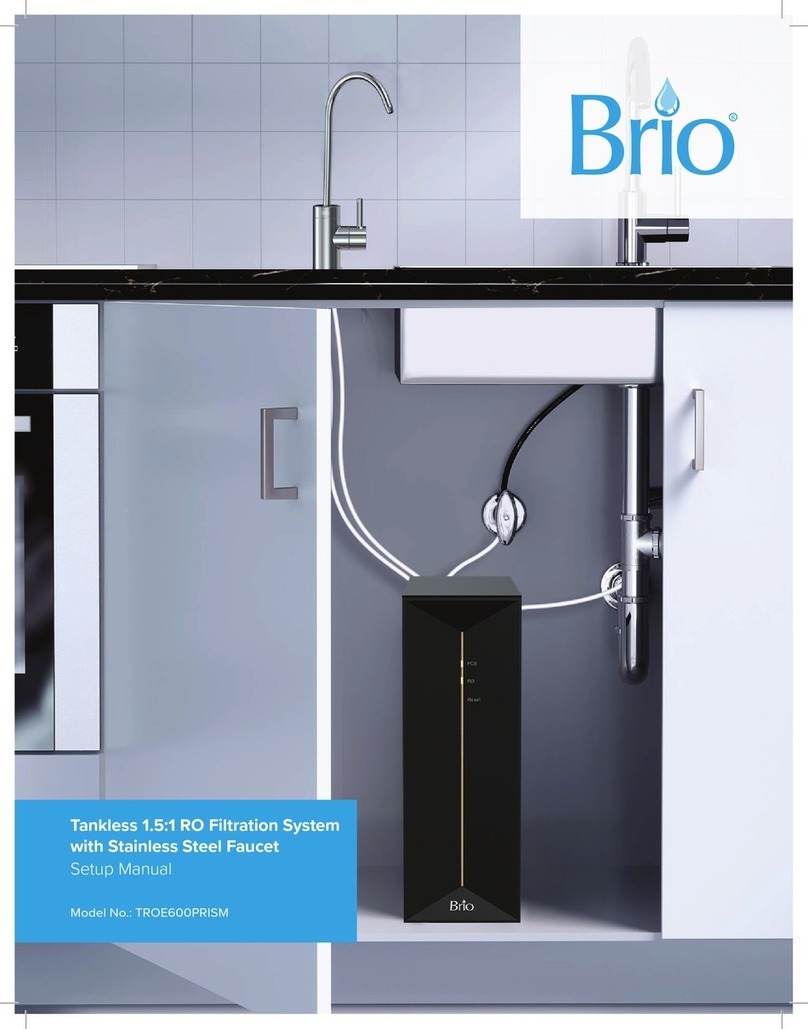
BRIO
BRIO TROE600PRISM User guide
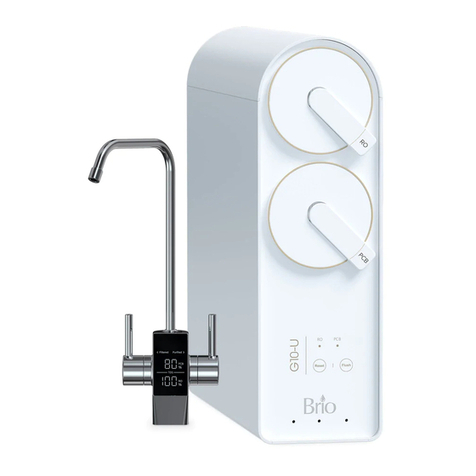
BRIO
BRIO G10-U User guide
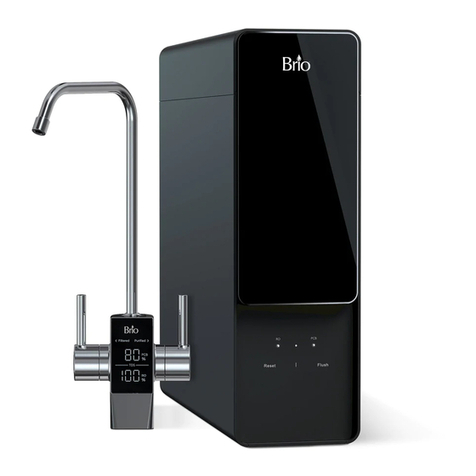
BRIO
BRIO AQUUS TROE600COL User guide

BRIO
BRIO G20-U User guide

BRIO
BRIO amphora User guide

BRIO
BRIO amphara UF100FWHT User guide
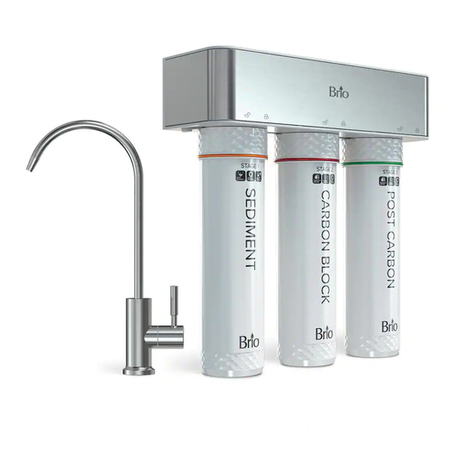
BRIO
BRIO FUS300R User manual
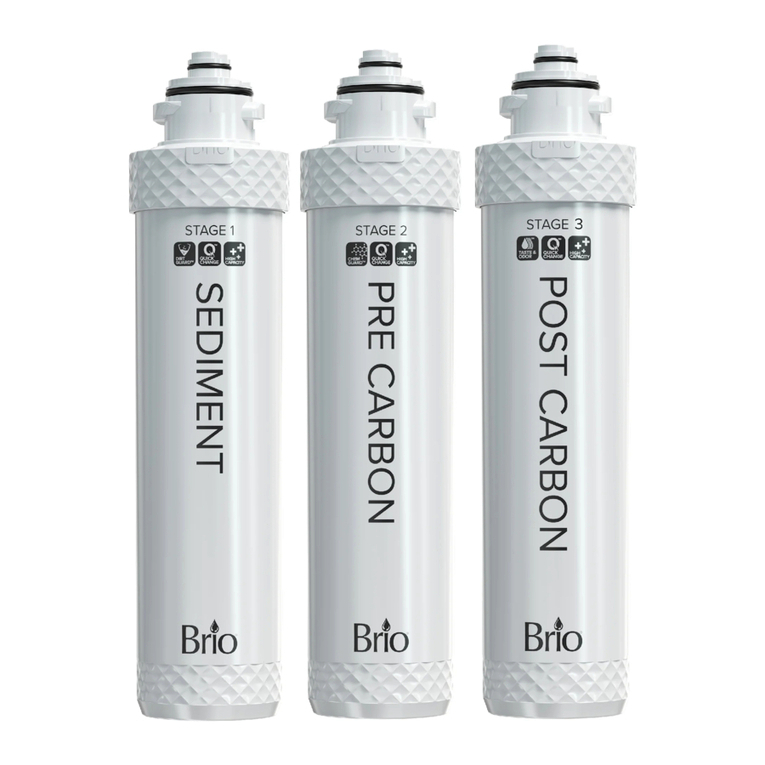
BRIO
BRIO 3 Stage System User manual
Popular Water Filtration System manuals by other brands

AquaticLife
AquaticLife 420343 Installation, operation, maintenance guide
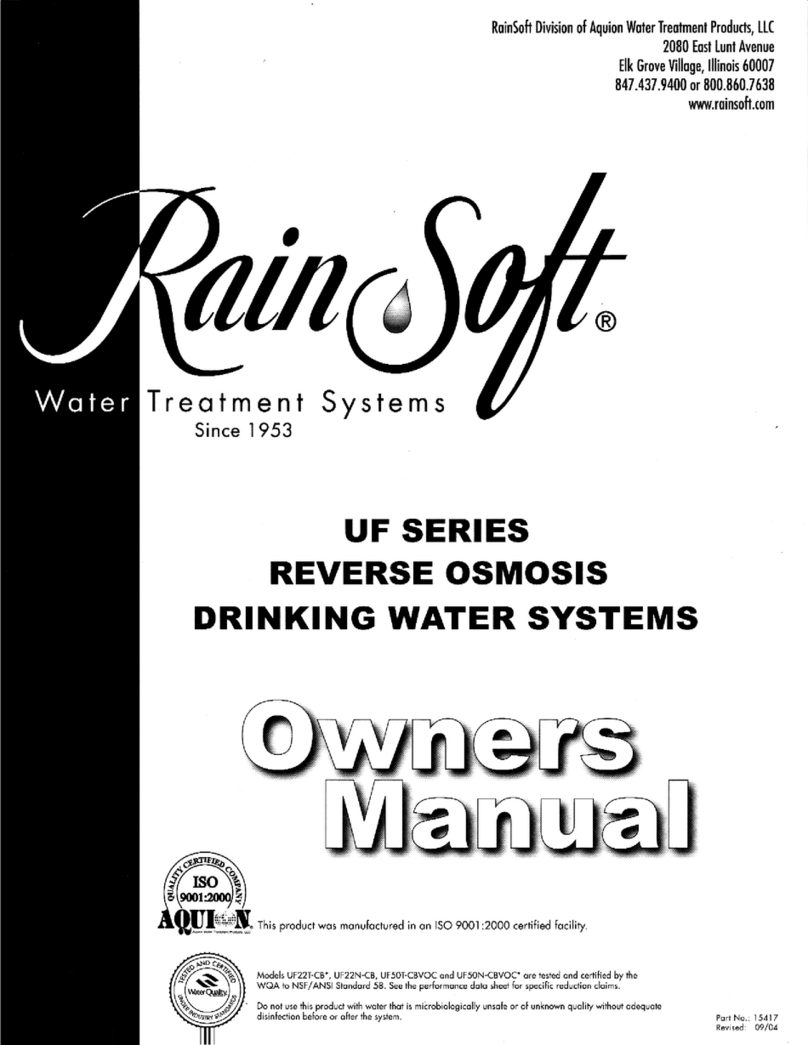
Rain Soft
Rain Soft UF50T-CBVOC owner's manual

PureAir
PureAir Ecozone Cumulus PA-CUM-10 user manual

Aqua Guard
Aqua Guard AquaSure Amrit user manual
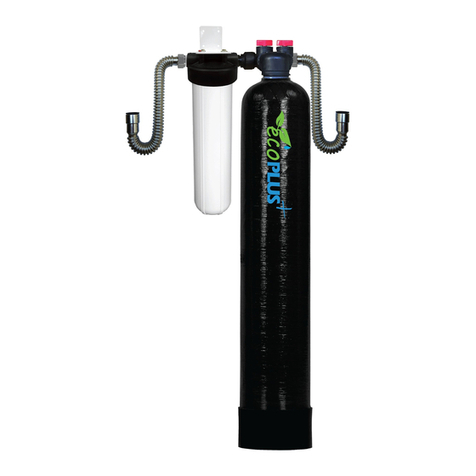
Ecoplus
Ecoplus EP-600-ULT Owners and installation manual

Astral Pool
Astral Pool HydroSpin Compact Installation and maintenance manual

